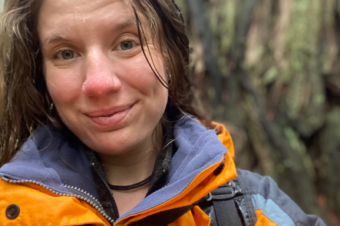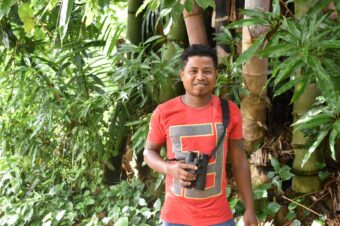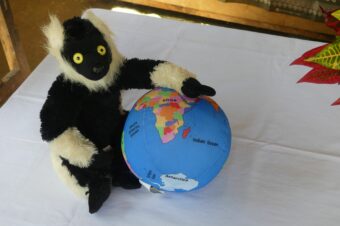Blog by MBP Volunteer, Danielle
Photos are all courtesy of Danielle


On 7th and 8th June, I was lucky enough to observe the re-collaring of a couple of aye aye, which MBP are monitoring. The first, was “Volafotsy” an adult breeding female, with a dependent juvenile female, called “Sapphire”. The dart team located the female pair in their nest in Vatovavy and, as all the permits required for removing the sedated adult had been gained, she was brought to the Kianjavato Ahmanson Field Station (KAFS) to be processed. This process involved weighing and recording her weight, checking, collecting and comparing previous data about her and then removing and replacing her radio collar. The radio collar is a small thumb sized barrel, attached to a tough fabric secured around the neck of the animal, these allow the field staff to track them regularly to gather data of their ecology, range and behavior.


The second aye aye, was a young male called “Vatovahy” who is approximately 2 years old, so has a little more growing to do. This male proved more of a handful whilst attaching his radio collar, as he began to come around from his sedation pretty quickly. Though with expert maneuvering and team work, the collar was fixed in place and the young animal was placed in a crate until he could be re-released. Although it was absolutely amazing to see these fascinating wild nocturnal lemurs close up, it was also a poignant reminder of what an amazing opportunity it is to be here, working at the Kianjavato Ahmanson Field Station and being able to gather information about the species, which all helps to protect them and their habitat. Every bit of data collected can also provide us with opportunities to improve and increase knowledge of their captive counterparts. I have already observed an interesting comparison of vocal behaviors between captive and wild aye aye. Although my observations are basic and based on personal experience of only a pair of captive aye aye, which I worked with back in the UK, they appear to have been much more vocal than the three wild individuals I have observed here. It opens up so many more questions. What else is different compared with captivity? Are they really that much more quiet in the wild? Why? Why are captive noisier? I can’t wait to find out more about these appealing primates!









